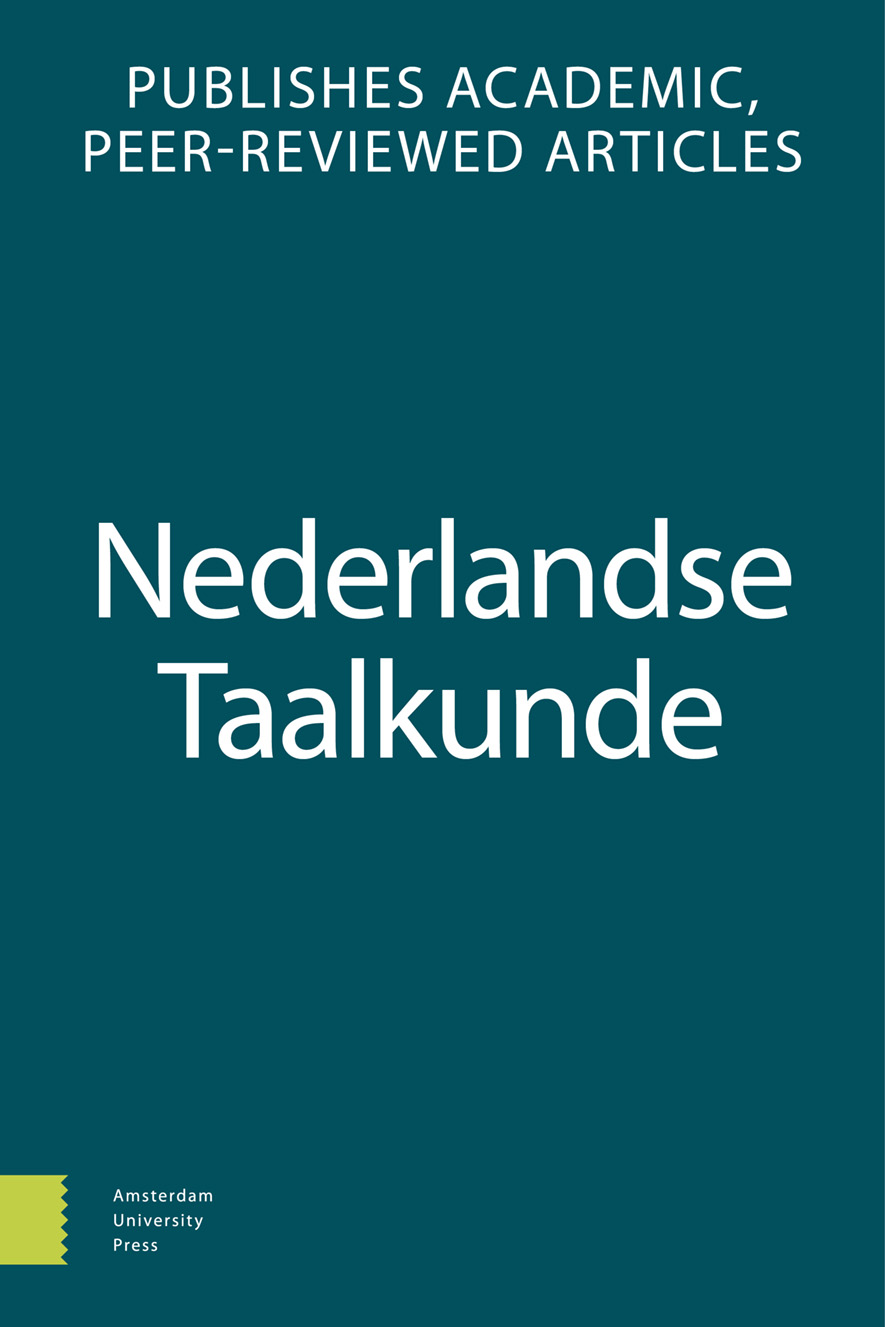-
oa Natiolectismen in misdaadfictie
Taalvariatie in televisieondertitels vroeger en nu
- Amsterdam University Press
- Source: Nederlandse Taalkunde, Volume 25, Issue 2-3, Oct 2020, p. 397 - 409
-
- 01 Oct 2020
Abstract
Natiolectisms in crime fiction. Language variation in subtitles
Sarah Van Hoof and Bram Vandekerckhove (2013) studied linguistic variation in a diachronic corpus of television series broadcast by the Flemish public service broadcaster (VRT). To establish whether there had been a decrease in oral standard Dutch language usage between the late 1970s and the late 2000s, they scrutinised the actors’ rendition of their scripts. They found that less Standard Dutch, but also less dialects were used in the Dutch-language fiction of the late 2000s. The latter contained more colloquial Belgian Dutch, the so-called ‘in-between’ variety (‘tussentaal’). While such sociolinguistic research into local Dutch-language fiction is highly interesting, it is also important to study linguistic variation in translated foreign fiction, as Dutch speakers are exposed a lot to such (audiovisual) translations. This article presents the results of a lexical analysis of a diachronic corpus of crime fiction subtitles (De Ridder 2015). These were broadcast by the VRT before and after their language policy changed in favour of an adherence to the Belgian, rather than the Netherlandic Dutch standard. The aim is to establish whether this resulted in an increase of Belgian Dutch lexis in their subtitles. Remarkably, in each period under scrutiny, in fact, more Netherlandic Dutch lexis was retrieved.


